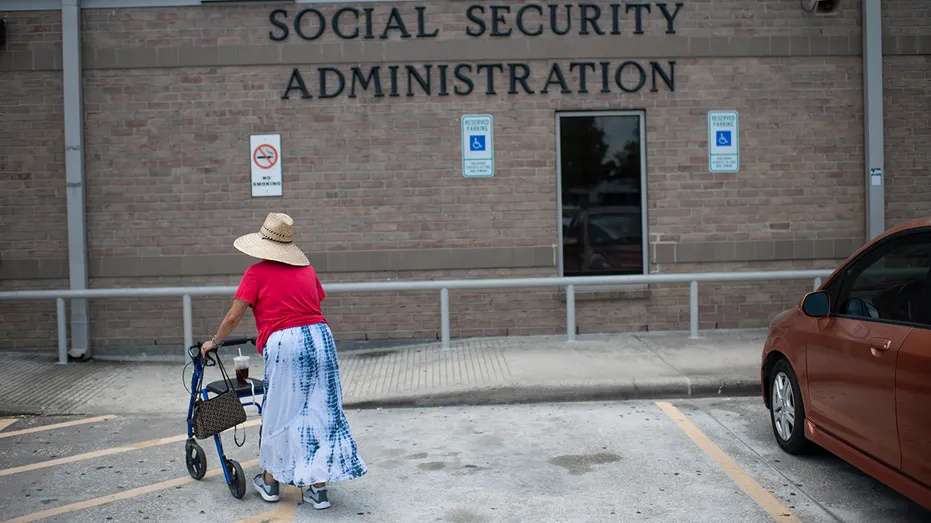Social Security benefits face 24% cut in less than a decade as trust fund dries up, new analysis reveals
Trust fund insolvency by 2032 would trigger automatic 24% benefit cuts affecting 62 million Americans, CRFB found
New survey indicates Social Security tax hikes lack broad support from young Americans
Ronald Reagan Presidential Foundation director Daniel Rothschild discusses how Americans are feeling about potential Social Security tax hikes on ‘Varney & Co.’
Social Security's retirement trust fund is on a path to insolvency in less than a decade, which would leave retirees facing an automatic 24% cut to their benefits if the trust fund is depleted, according to a new analysis.
Social Security is funded by a combination of payroll taxes and disbursements from the trust fund, and if the trust fund is depleted, federal law requires that benefits be cut to match incoming revenues.
The nonpartisan Committee for a Responsible Federal Budget (CRFB) on Thursday released its latest analysis of Social Security's trust fund based on the recent trustees' report along with updated fiscal projections following the enactment of the One Big Beautiful Bill Act.
CRFB estimated that the law's enactment moved up the insolvency timeline for Social Security's trust fund to late 2032, which would leave beneficiaries facing a 24% benefit cut after the trust fund is tapped out.
EXPERTS WARN SENATE TAX BILL ACCELERATES MEDICARE AND SOCIAL SECURITY INSOLVENCY DATES

Social Security's trust fund is due to be depleted in late 2032, triggering a 24% benefit cut, the CRFB's analysis found. (Photo illustration by Kevin Dietsch/Getty Images / Getty Images)
The new law's temporary, enhanced deduction for seniors increased the size of the benefit cut by about a percentage point – though it would be larger if the deduction and other temporary policies were made permanent.
The size of the Social Security benefit cut would vary based on a couple's age, marital status and work history.
For a dual-income couple with a medium income who retires at the start of 2033, that would amount to an $18,100 annual benefit cut, or a monthly reduction of about $1,508. By contrast, a single-income couple at that income tier would see a $13,600 annual benefit cut.
SOCIAL SECURITY TRUST FUND NOW PROJECTED TO RUN DRY IN 2034, TRIGGERING MASSIVE BENEFIT CUTS

The size of the Social Security cut would vary based on retirees' age, marital status and work history. (iStock / iStock)
A dual- and low-income couple would see an $11,000 annual benefit cut, while a single-income couple in the low-income category would see benefits decline by $8,200 over the year.
For high-income households, a dual-income couple would see benefits cut by $24,000 a year, while a single-income couple would have benefits fall by $18,000 for the year.
Over time, benefit cuts would deepen as the growth in Social Security's expenses continues to outpace incoming revenues, as CRFB projected the benefit cut would rise to well over 30% by 2099.
SOCIAL SECURITY INSOLVENCY COULD SPEED UP WITH ILLEGAL IMMIGRATION CRACKDOWN

Retirees receiving Social Security would face a benefit cut if the program's trust fund is depleted. (Mark Felix for The Washington Post / Getty Images)
The depletion of Social Security's trust funds could be compounded by the insolvency of Medicare's hospital insurance trust fund, which is also projected to be depleted in 2033 and faces an 11% cut to scheduled benefit payments that could affect access to healthcare.
"Policymakers pledging not to touch Social Security are implicitly endorsing these deep benefit cuts for 62 million retirees in 2032 and beyond," CRFB said. "It is time for policymakers to tell the truth about the program's finances and to pursue trust fund solutions to head off insolvency and improve the program for current and future generations."
The Social Security and Medicare trust funds are facing depletion due to the aging of America's population relative to prior decades, as the ratio of workers to retirees has shifted.
GET FOX BUSINESS ON THE GO BY CLICKING HERE
Data from the SSA shows the ratio of covered workers paying taxes to the number of beneficiaries was 8.6 workers to beneficiaries as of 1955. That number has declined to 2.8 as of 2013 due to the aging of the population.




















